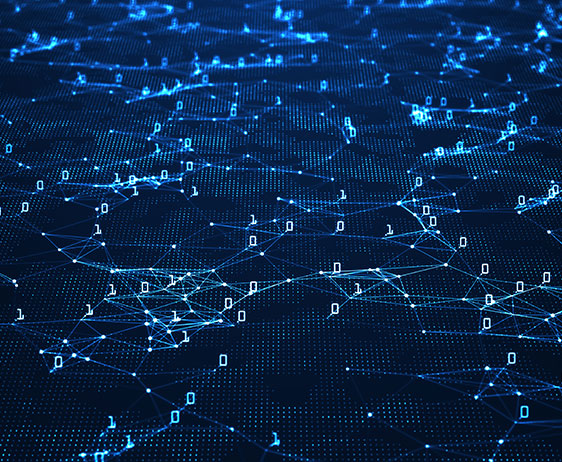

Cloud Computing
Cloud computing is the on-demand availability of computer system resources, especially data storage and computing power, without direct active management by the user. The term is generally used to describe data centers available to many users over the Internet. Large clouds, predominant today, often have functions distributed over multiple locations from central servers. If the connection to the user is relatively close, it may be designated an edge server. Clouds may be limited to a single organization (enterprise clouds), or be available to multiple organizations (public cloud). Cloud computing relies on sharing of resources to achieve coherence and economies of scale.
Deep Learning

Deep learning is a function of Artificial Intelligence (AI) that imitates the working of human brain to process data and create patterns to be used in decision making. It is also known as deep neural learning or deep neural network. It is a field that is based on learning and improving on its own by examining computer algorithms. While machine learning uses simpler concepts, deep learning works with artificial neural networks that are designed to emulate the thinking and learning procedure of humans.
Digital Image Processing

Digital Image Processing (DIP) deals with manipulation of digital images through a digital computer. It is a subfield of signals and systems but focuses particularly on images. DIP emphasizes on developing a computer system that is able to process an image. The input of the system is a digital image and the image is processed by the system process using efficient algorithms and produces an image as an output. The most common example is Adobe Photoshop. It is one of the widely used application for processing digital images.
Machine Learning

Machine Learning (ML) is a branch of artificial intelligence which works on the mechanism that any system can learn from the data provided, recognize certain patterns and make strong decisions. Generalization and ML go hand in hand. Generalization is the ability of a model to conform to an unknown data sample which is drawn from the identical distribution that was used to create it.
Natural Language Processing

Natural language processing (NLP) is a subfield of linguistics, computer science and artificial intelligence concerned with the interactions between computers and human language, in particular the way to program computers to process and analyze large amounts of natural language data. The result is a computer capable of understanding the contents of documents, including the contextual nuances of the language within them. The technology can then accurately extract information and insights contained in the documents as well as categorize and organize the documents themselves.
Data Mining
Data mining is a process used to turn unprocessed data into useful information by using different types of techniques that helps to improve the quality of work. There are seven such techniques available namely classification, clustering, regression, outlier detection, sequential pattern, prediction and association rules. These are used to perform analysis on the provided data accessed from a huge dataset.

Network Security
Network security consists of the policies, processes and practices adopted to prevent, detect and monitor unauthorized access, misuse, modification, or denial of a computer network and network-accessible resources. It protects the network and data from breaches, intrusions and other threats. It involves access control, virus and antivirus software, application security, network analytics, types of network-related security (endpoint, web, and wireless), firewalls, VPN encryption and more.
Signal Processing
Signal Processing is a field of electrical engineering that aims at processing, analyzing and collecting relevant information from the recorded signals. It emphasizes on determining the elements of interest in the captured signal. The signals are recorded in the form of waves and could be used to monitor the brain activities of humans. They are generally in the form of audio.


Underwater Wireless Sensor Networks
Wireless Sensor Networks

The Underwater Wireless Sensor Network (UWSN) is a network used to perform monitoring tasks over a specific region. It is equipped with smart sensors and vehicles that are adapted to communicate cooperatively through wireless connections. The surface sink retrieves the data from sensor nodes. The sink node has a transceiver that can control acoustic signals received from underwater nodes. It can also transmit and receive long-range radio frequency signals for communication with the onshore station. The collected data is used locally or connected to another network for a specific purpose.

Wireless Sensor Network (WSN) refers to spatially dispersed and dedicated sensors that monitor and record the physical conditions of the environment and forward the collected data to a central location. WSNs can measure environmental conditions such as temperature, sound, pollution levels, humidity and wind.



